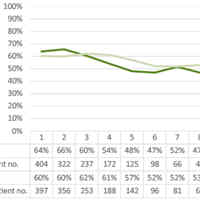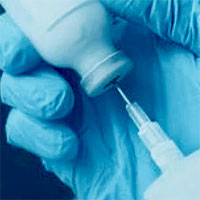Tag: LOS

The impact of physical medicine and rehabilitation consultation on clinical outcomes in the SICU
The impact of a physical medicine and rehabilitation (PM&R) consultation on clinical outcomes in critically ill surgical patients remains unclear. The aim of this study is to examine whether the patients who received PM&R... read more

Prophylactic Melatonin for Delirium in Intensive Care (Pro-MEDIC)
Enteral melatonin initiated within 48 h of ICU admission did not reduce the prevalence of delirium compared to placebo. These findings do not support the routine early use of melatonin in the critically ill. A total of... read more

Liberation from Invasive Mechanical Ventilation with Continued Receipt of Vasopressor Infusions
Weaning protocols for discontinuation of invasive mechanical ventilation often mandate resolution of shock. Whether extubation while receiving vasopressors is associated with harm is uncertain. To examine whether extubation... read more

Oral Midodrine Feasibility in Early Sepsis
This study proved the feasibility of clinical trial to use oral midodrine in early sepsis. The study was not powered to detect statistically significant differences between the two groups, and therefore, the results from... read more

Effect of a Single High Dose of Vitamin D3 on Hospital LOS in Patients with COVID-19
Among hospitalized patients with COVID-19, a single high dose of vitamin D3, compared with placebo, did not significantly reduce hospital length of stay. The findings do not support the use of a high dose of vitamin D3 for... read more

Nutritional Risk Screening and Body Composition in COVID-19 Patients
Present findings confirm the clinical utility of NRS-2002 to assess nutritional risk in patients with COVID-19 at hospital admission and in predicting LOS, and that bioimpedance does not seem to add further predictive value.... read more

Prior Routine Use of NSAIDs and Important Outcomes in Hospitalised COVID-19 Patients
Coronavirus disease 2019 (COVID-19) infection causes acute lung injury, resulting from aggressive inflammation initiated by viral replication. There has been much speculation about the potential role of non-steroidal inflammatory... read more

Quetiapine Decreases Mortality and Improve Neurological Outcomes in Critically-ill TBI Patients
Quetiapine may decrease mortality and improve neurological outcomes in critically-ill traumatic brain injury (TBI) patients. It has a dose-dependent effect to decrease intracranial pressure (ICP) and increase cerebral perfusion... read more

ICU Risk Factors and Outcomes for Each Delirium Subtype
Although included studies reported on many subtype-specific risk factors (hypoactive, hyperactive) and outcomes, heterogeneity in reporting and methodological quality limited the generalizability of the results and the evidence... read more

Sedation and Analgesia in the ICU
Sedation and analgesia have high importance in patient-centered care. Patients in the ICU are seriously ill and often suffer from anxiety, agitation, and pain. There is sometimes a need to use deep and prolonged sedation,... read more

Nonoperative Management of Splenic Injury of Patients with Reduced Consciousness is Safe and Feasible in Well-equipped Institutions
This study shows that NOM for blunt splenic trauma is a viable treatment modality in well-equipped institutions, regardless of the patients mental status. However, the presence of neurologic impairment is associated with... read more

An assessment of repeat computed tomography utilization in the emergency department in the setting of blunt trauma
Two CT scans performed during blunt trauma encounters demonstrated mixed benefit and were associated with an increased hospital LOS. Additionally, IV contrast was associated with lower rates of AKI. Of 5787 patient encounters,... read more

Critical Pediatric Heart Deaths Drop by 24% at Hospitals With Cardiac ICUs
Major complications fall by 12%, time on a ventilator declines by 13% among children in the cardiac ICU at PC4 hospitals As a pediatric cardiology fellow nearly a decade ago, Michael Gaies remembers asking hospital colleagues... read more

Outcomes of VV ECMO When Stratified by Age
The purpose of this study was to evaluate survival to hospital discharge for patients on venovenous extracorporeal membrane oxygenation (VV ECMO) when stratified by age. We performed a retrospective study at single, academic,... read more




